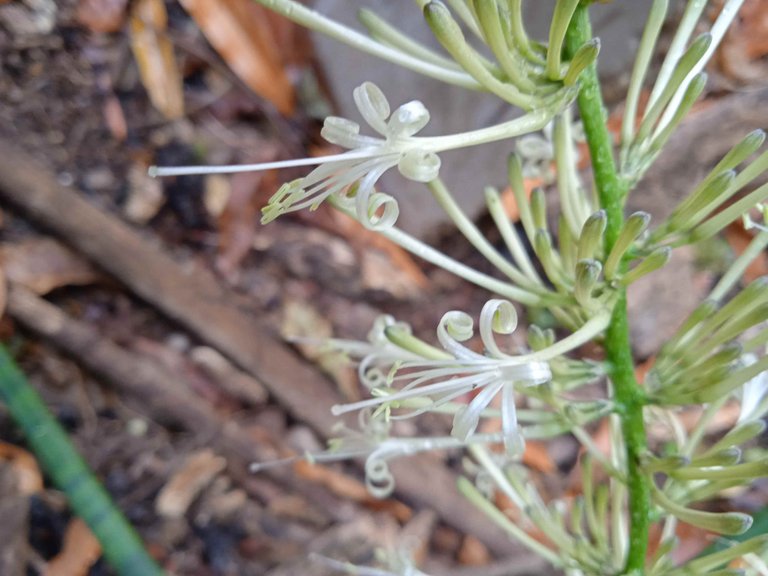
Hi beautiful Amazing Nature Community, I hope that this year is favorable for everyone, and that our beautiful planet is better known and more respected by more human beings. Let us remember that what is not known, is not cared for.
Saludos, hermosa comunidad Amazing Nature, espero que este año sea propicio para todos, y que nuestro bello planeta sea mejor conocido y más respetado por más seres humanos. Recordemos, que lo que no se conoce, no se cuida.

Y ya que la idea es conocer cada día más de la bella naturaleza, hoy vengo a compartir una planta muy especial, que si bien está en la esquina más lejana de mi solar, y quizás esté algo descuidada por mí, aun así es una planta noble que brinda nos brinda sus flores y embellece ese espacio. Se trata de la Sansevieria cylindrica.
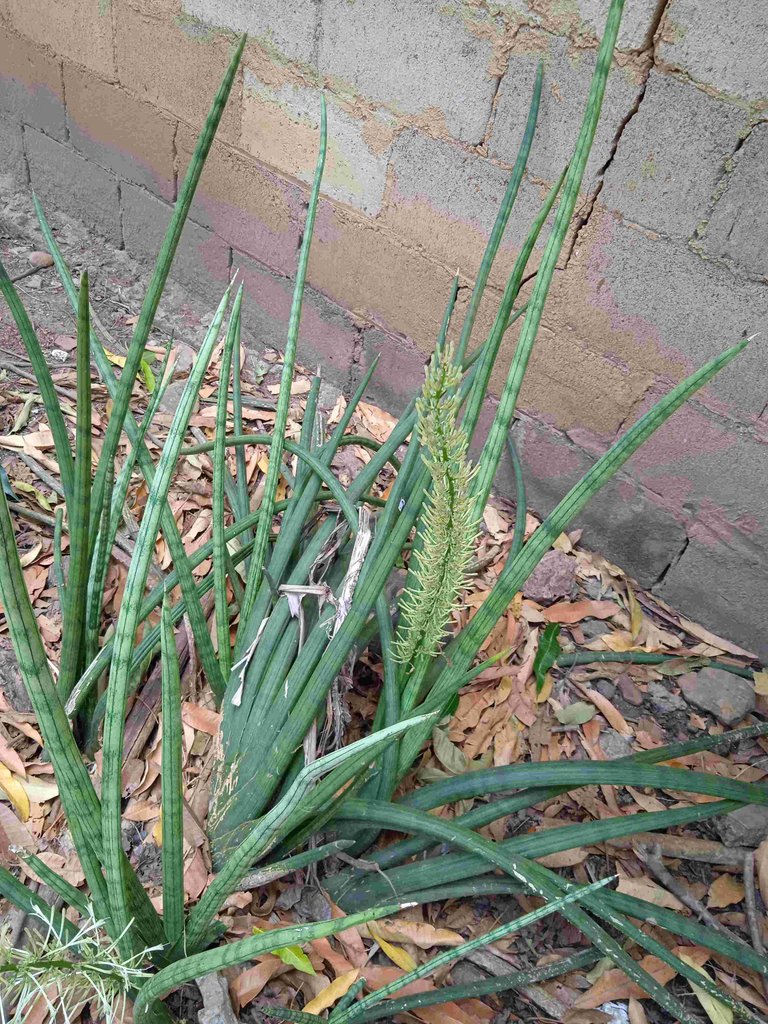

La Sansevieria cylindrica la conocí por el nombre de Espada del Libertador, nombre que se le da en alusión a la forma de sus hojas, que emulan a una espada, y de El Libertador, en alusión a Simón Bolívar, El Libertador, el Padre de la Patria. No obstante, al hacer una revisión bibliográfica sobre esta planta, encontré que también se le conoce como planta serpiente o lanza africana, nombres que obviamente vienen de la forma de sus hojas.

Cuando trasplanté aquí esta planta, hace 2 años, era pequeña. Sin embargo, actualmente son dos plantas, ya que de ella nació otra, y cada cierto tiempo, creo que cada 6 meses, las veo florear. Hace dos días estaba en mi solar sentada y noté dos largas espigas con flores sin abrir. Al siguiente día volví a observarlas, y ví que una de las espigas estaba llena de unas flores muy bellas y delicadas, y si bien ya las había visto, fue recientemente que decidí fotografiarlas. Aquí les muestro primer la espiga con las flores sin abrir, y luego con las florecillas abiertas.
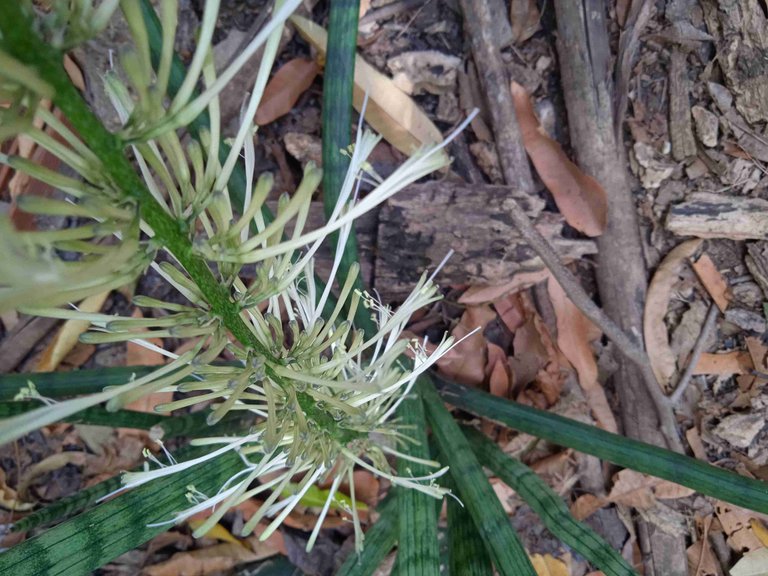
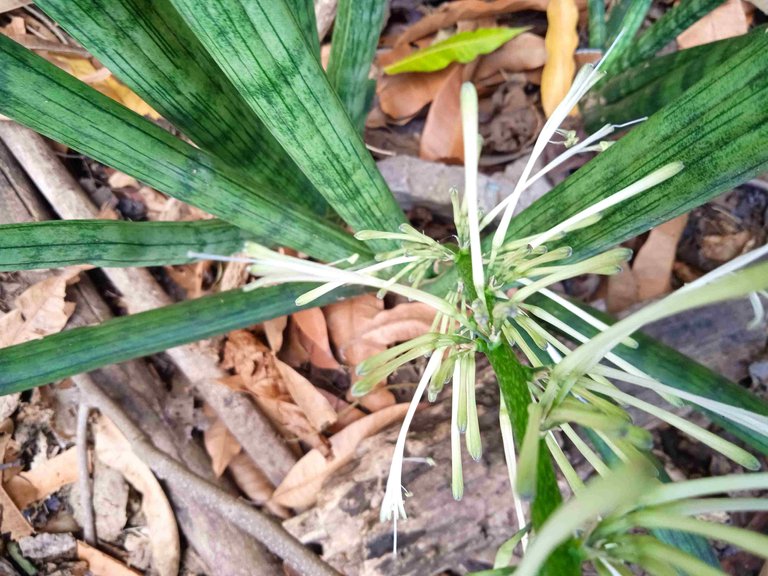
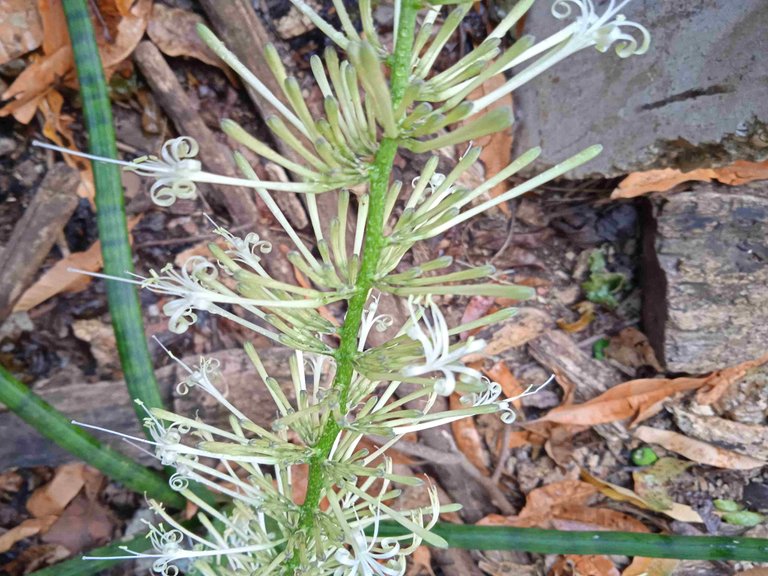


It is a species of Dracaena, which corresponds to a genus of herbaceous, perennial and rhizomatous plants, of which there are 130 species originating from Asia and Africa.
Each plant can have 4 to 5 leaves, so I deduce that I have more than two plants on my plot.
There are plants whose leaves can reach a length of 2 meters.
The leaves are green, tinged with white or gray, some show bands of these colors.
The flowers are small, white, between 3.5 and 4 centimeters in length.
The fruit is small, approximately 2 centimeters in diameter, (right now I don't remember its color, later I will share the characteristics and photos of the fruits).
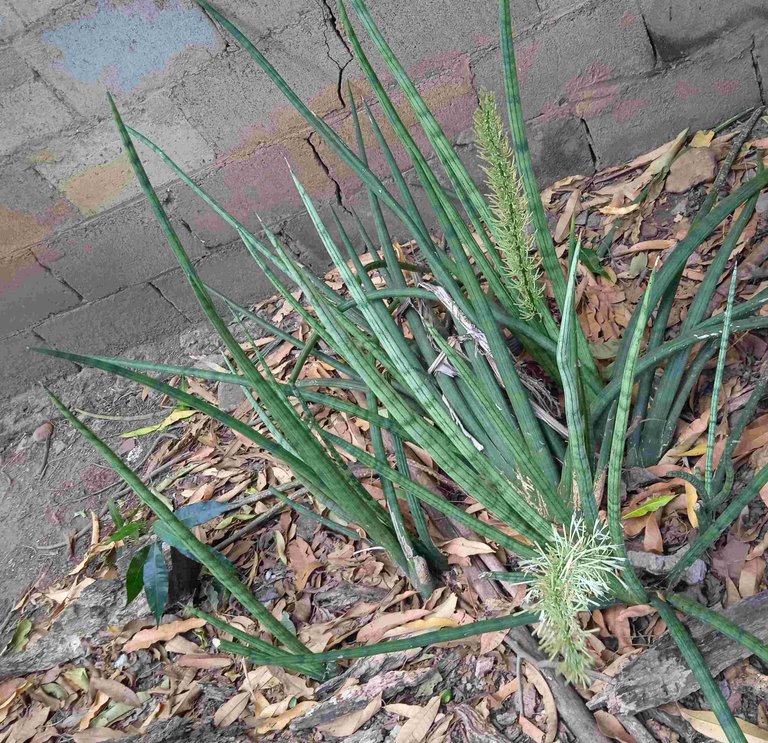
Al revisar la bibliografía sobre esta planta (ver los enlaces consultados al final), pude encontrar las siguientes características generales:
- Es una especie de Dracaena, que corresponde a un género de plantas herbáceas, perennes y rizomatosas, de las cuales existen 130 especies originarias de Asia y África.
- Cada planta puede presentar de 4 a 5 hojas, por lo que deduzco que tengo más de dos plantas en mi solar.
- Hay plantas cuyas hojas pueden alcanzar una longitud de 2 metros.
- Las hojas son verdes, matizadas con blanco o gris, algunas muestran bandas de estos colores.
- Las flores son pequeñas, blancas, de entre 3,5 y 4 centímetros de longitud.
- El fruto es pequeño, de aproximadamente 2 centímetros de diámetro, (ahora mismo no recuerdo el color del mismo, luego les compartiré las características y fotos de los frutos).

Mentiría si digo que cuido con regularidad estas plantas, pues sólo las riego cuando el verano está muy intenso y tienen muchas semanas sin recibir agua. Tampoco les he abonado, por lo que han crecido de forma silvestre prácticamente. De acuerdo a mi experiencia y a la bibliografía consultada, esta planta es poco resistente al exceso de agua y al frío. También requiere luz solar indirecta. Crece estupendamente en suelos arenosos, con buen drenaje y muy de vez en cuando requieren abono.
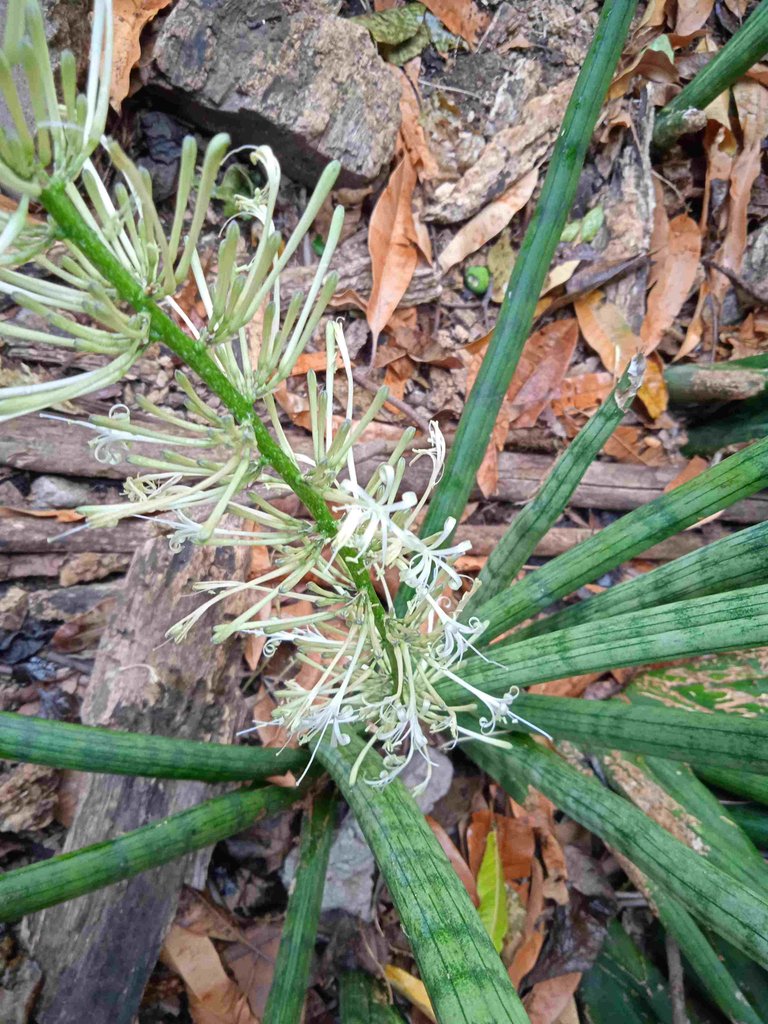
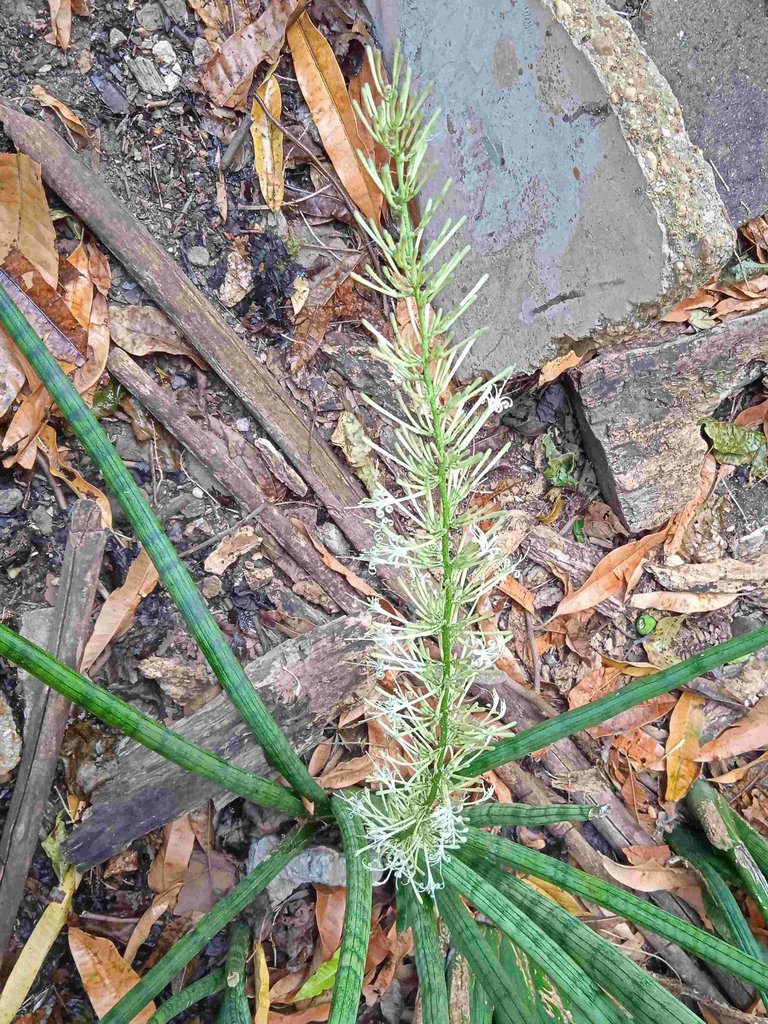

Otro dato importante que encontré, es que esta planta es catalogada por la NASA, como altamente eficaz para purificar el aire. Al parecer puede absorber y procesar 108 contaminantes que se encuentran en el aire, por lo que es una planta que debería tenerse en el interior de las casas y oficinas, (creo que plantaré varias de ellas en macetas, para llevarlas dentro de mi casa). Al observar sus hermosas y delicadas flores pude ver que sus flores no atraen a las abejas, no son melíferas, lo cual es una lástima, especialmente ahorita en que las abejas necesitan más comida y no hay casi flores en mi solar.
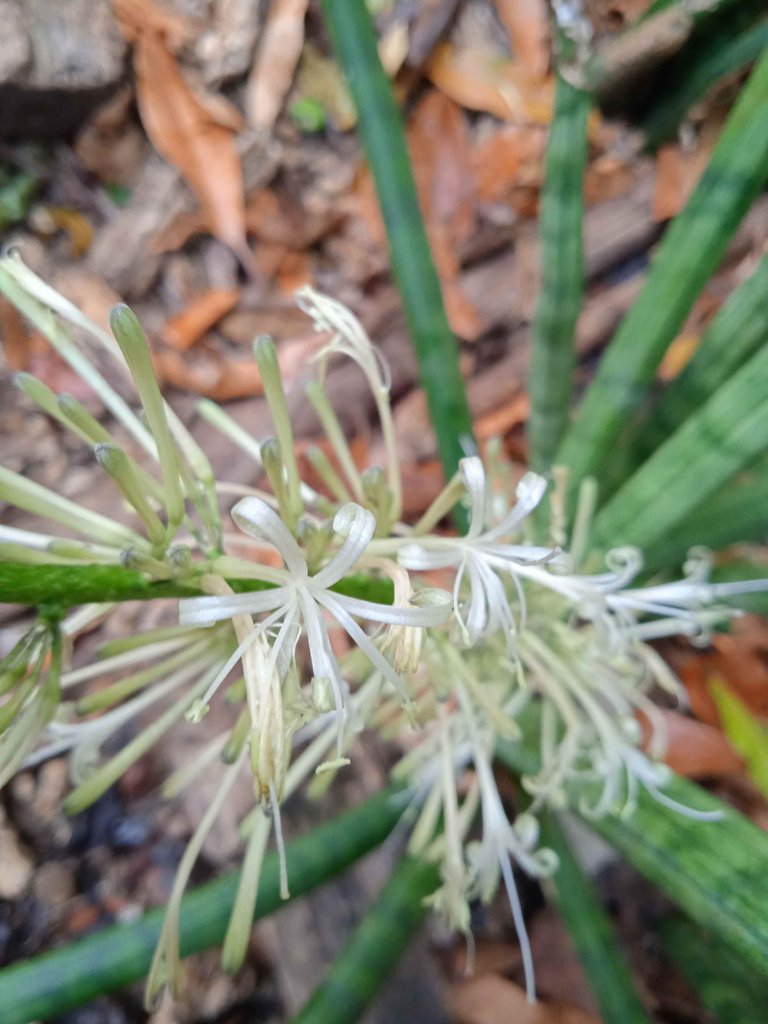

Here I end my post today, where I have shared photos and information about a simple, but very valuable plant: Dracaena cylindrica or Sansevieria cylindrica. I hope you liked it. Hugs!
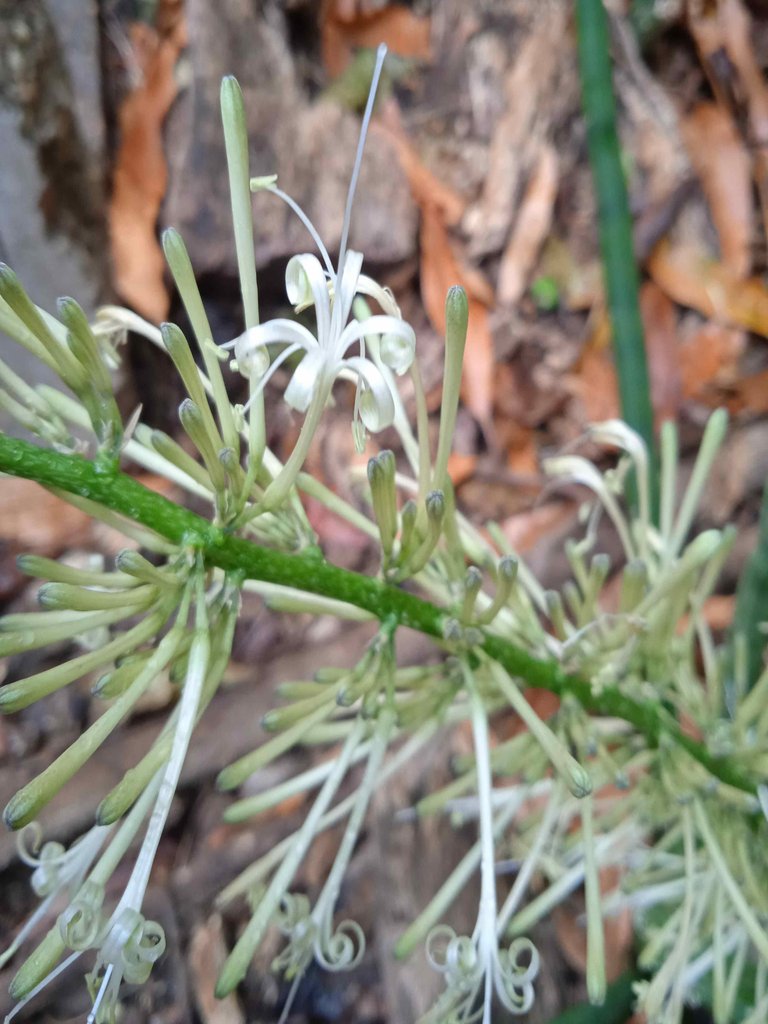
Aquí termino mi post de hoy, donde les he compartido fotos e información sobre una planta sencilla, pero muy valiosa: La Dracaena cylindrica o Sansevieria cylindrica. Espero les haya gustado. ¡Abrazos!

Bibliography / Bibliografía

Todo el contenido, excepto los divisores, son de mi propiedad y están sujetos a derechos de autor // All content except the dividers are my property and subject to copyrigh



Delegations welcome!
 Delegations welcome!
Delegations welcome!
